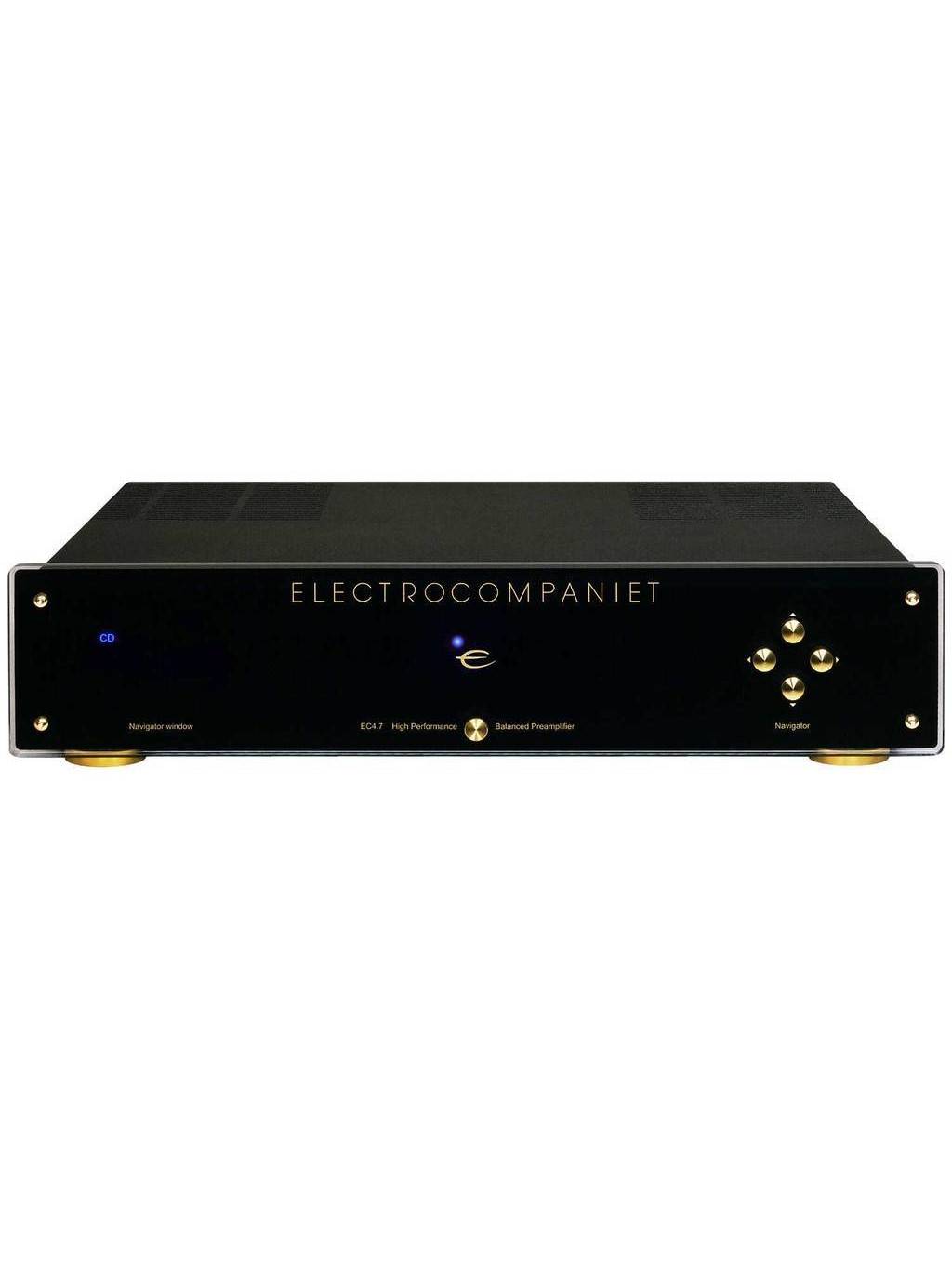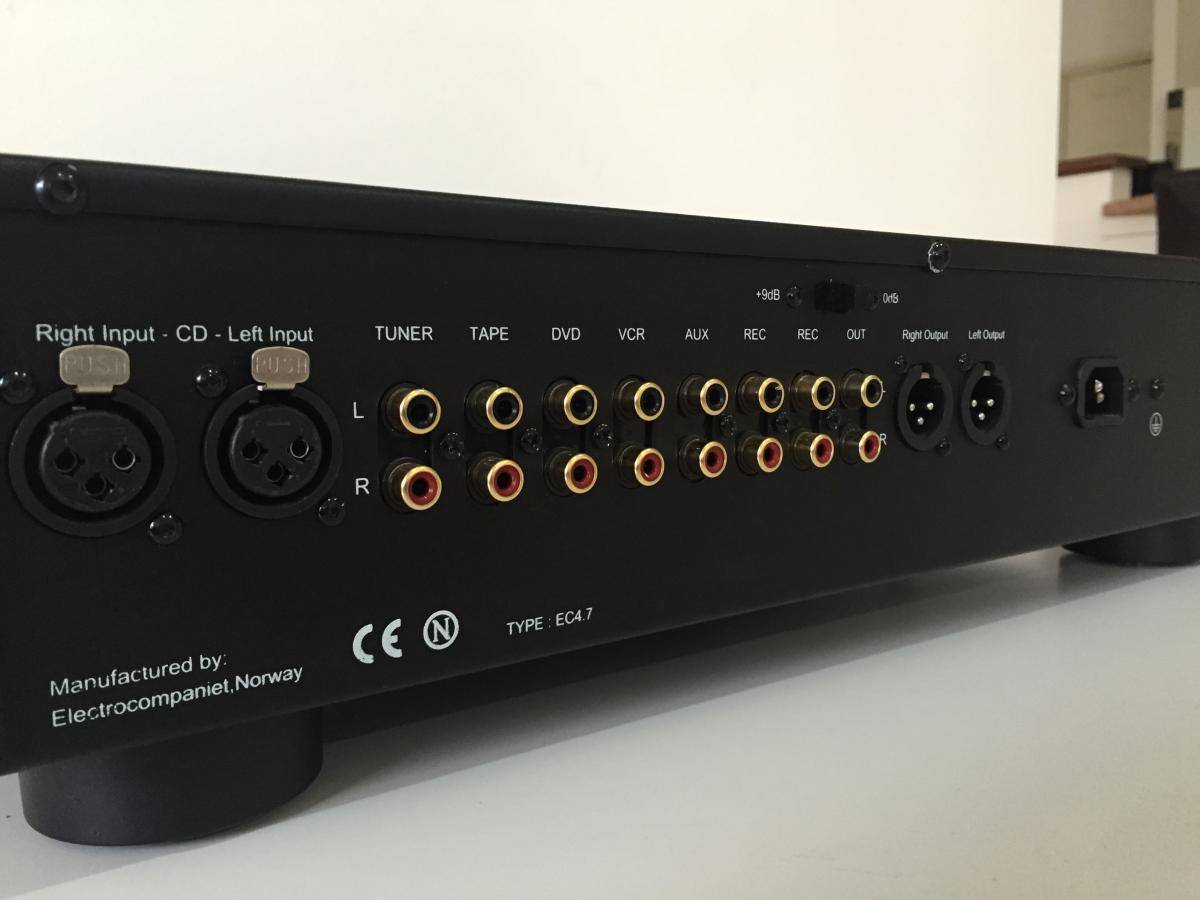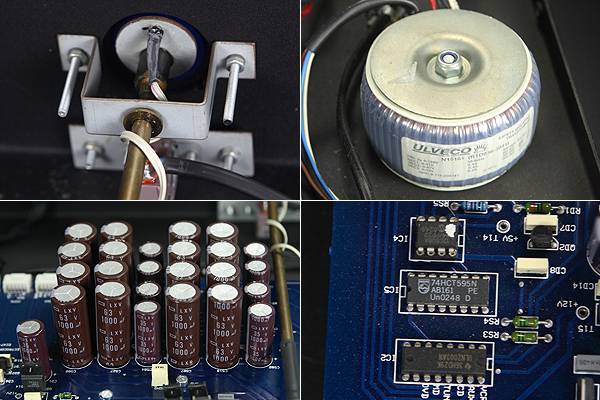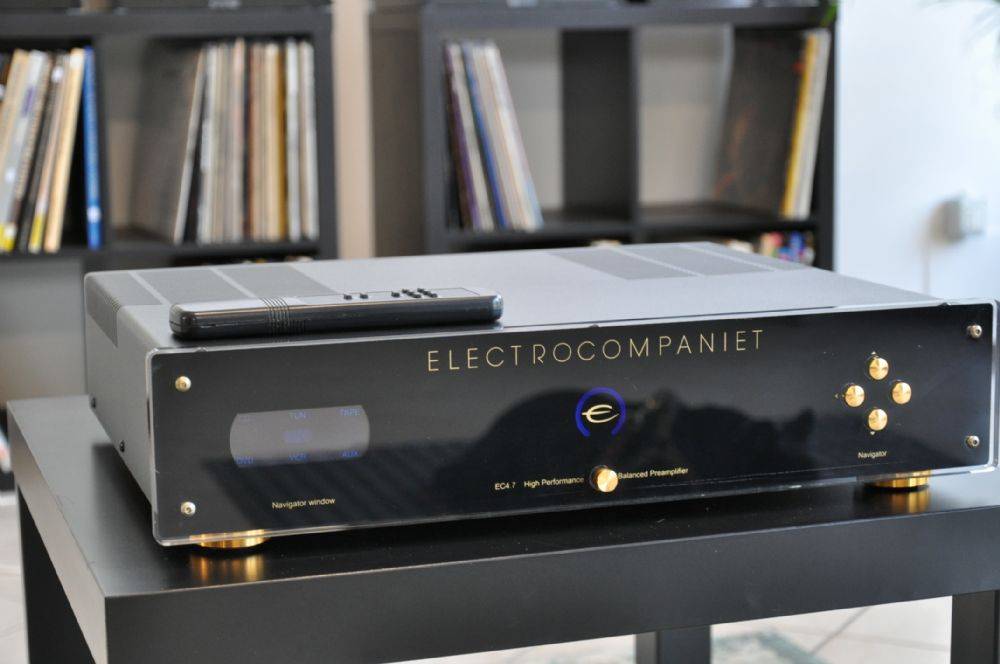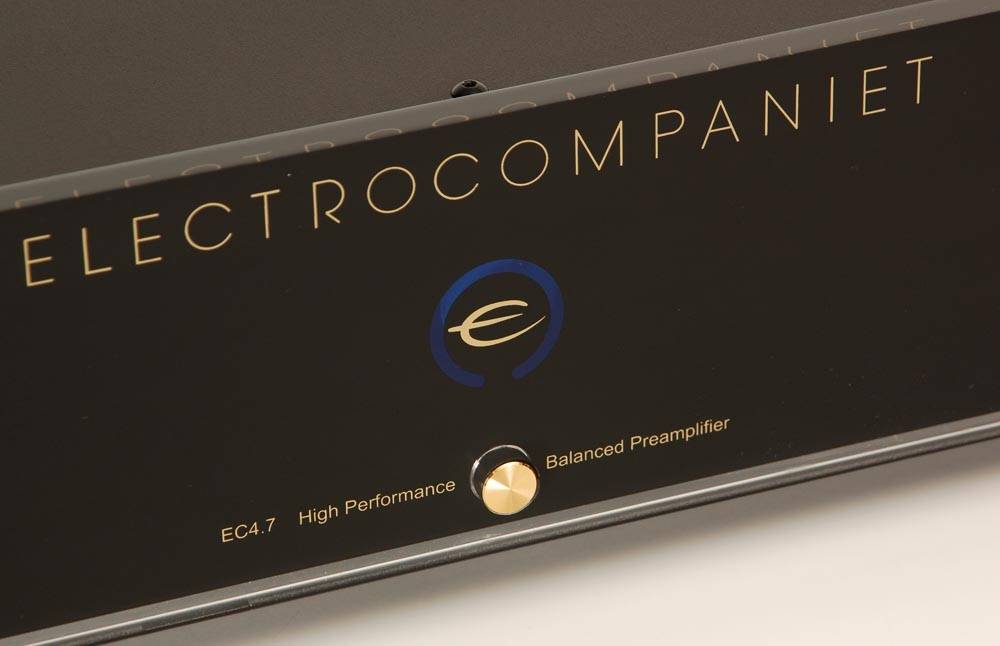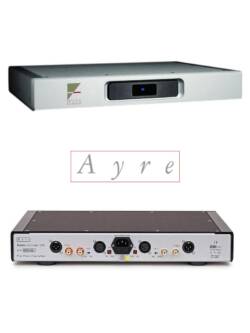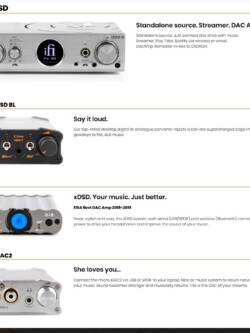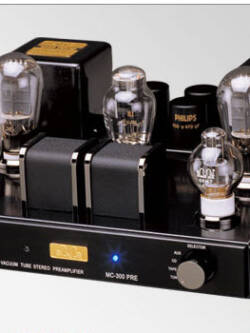Electrocompaniet EC 4.7 Preamplifier
Original price was: R94,000.00.R38,000.00Current price is: R38,000.00.
Electrocompaniet ECC-1 CD Player, EC 4.7 Preamp, and AW180 Monoblock Power Amplifier (TAS 198)

Most American audiophiles are probably too young to remember the time when small European firms like Tandberg and Electrocompaniet were familiar names in the high end. At least some, however, will remember that Electrocompaniet was one of the first manufacturers to really understand and address the new types of distortion caused by the switch to solid-state, and that it introduced some of the first transistor amplifiers that preserved much of the liquidity and natural lower-midrange warmth and realism of the best tube designs.
I can remember reviewing the 25-watt Electrocompaniet amplifier designed by Dr. Matti Otala and Jan Lohstroh, and it was a real breakthrough for the time. I also can remember a series of Electrocompaniet products that followed. As with Tandberg, however, unfavorable exchange rates, dealer and distribution problems, and a failure to keep up with the trends in the American market caused Electrocompaniet to fade from the U.S. audio scene.
Well, Electrocompaniet is back, and back with some truly excellent equipment. The items under review include the ECC-1 CD player, the EC 4.7 preamp, and the AW180 monoblock power amplifiers, and they are only part of the story. Electrocompaniet has a range of more expensive top-of-the-line stereo electronics, a lower-priced line, and surround-sound equipment as well. It also hasn’t lost its touch over the year. I may have some qualms about the ergonomics and pricing of some of the units—it’s hard to export competitively to the U.S., given European costs—but I have no qualms about their sound quality.
ECC-1 CD Player
There are reasons why many audiophiles buy their electronics from the same manufacturer. While purists may talk about straight wires with gain, the reality is that every active and passive component is to some extent a filter altering the sound of whatever passes through it. This filtering process is both interactive and cumulative. If you mix the filtering effects of the products of different firms and designers, the end result is generally negative. Each component from a different source alters the sound in a slightly different way and subtracts different nuances. This is particularly true if there are any interface problems in impedance, bandwidth, digital processing, speaker loads, etc.
Well-designed equipment from a single firm, however, is virtually always designed to “voice” equipment to produce consistent sound qualities. This rarely is a deliberate effort to produce coloration. It is simply a product of the fact that every designer, like every audiophile, has his or her own particular ideal when it comes to what is neutral and musically natural. The better the “ear” involved and the more consistent the voicing of each item of equipment, the more synergy in the “filter effect” and the less alteration in overall sound quality.
This shows up clearly in the ECC-1 CD player. Taken by itself, the ECC-1 is simply another very good CD player. It does not offer some dramatic new approach to digital design, and it does not offer the added resolution from a CD that cutting-edge digital designs like the Boulder 1021, Meitner CDSA, and PS Audio Perfect Wave players do. It also sells for $3650. A number of cheaper units that are top-rated by this magazine (try the Cambridge Audio Azur 840C), as well moderately priced units like the better Marantz and NAD CD players, offer similar overall sound quality—albeit with a slightly different set of sonic nuances—for less money. Some also offer more features, such as SACD compatibility.
In saying this I don’t mean that the ECC-1 is not an excellent design. It uses 24-bit/192kHz DACs from Cirrus Logic, and has a precision fully balanced analog-output stage that operates in Class A. It has an anti-vibration system modified from Electrocompaniet’s EMC-1 UP top-of-the-line player, and offers both balanced and single-ended outputs, as well as a coaxial digital output.
While Electrocompaniet provides few details about the technical features of the ECC-1’s circuitry, it does state that the analog-output filter is optimized to reduce phase shift at higher frequencies, thereby leaving high-frequency musical information intact. It provides no indication that this filter is particularly advanced or cutting-edge, but it is clear from listening that the ECC-1 is exceptionally well-engineered in regard to upper-octave energy and detail—an area where the aging Red Book standard and 44.1/16 digital technology are not kind or gentle to music.
 Audiophiles buy as much for sonic nuance as for overall sound quality. And the ECC-1 has an unusually good analog output stage for any CD player, one that emphasizes the natural warmth of music. There is less hardness in the treble through the ECC-1. Dynamics and bass are also unusually good. Digital technology is only part of the story in any CD player, and a really good analog section is crucial to giving it the musicality that makes it a pleasure to listen to.
Audiophiles buy as much for sonic nuance as for overall sound quality. And the ECC-1 has an unusually good analog output stage for any CD player, one that emphasizes the natural warmth of music. There is less hardness in the treble through the ECC-1. Dynamics and bass are also unusually good. Digital technology is only part of the story in any CD player, and a really good analog section is crucial to giving it the musicality that makes it a pleasure to listen to.
These nuances make the ECC-1 an exceptionally good match for the EC 4.7 and AW180. The preamp and amp are “voiced” in the same way as the CD player. They both provide the same natural midrange warmth. They both get upper-midrange and treble right, bringing out the natural detail and top-octave energy of acoustic instruments without spotlighting or exaggerating it and without adding hardness to female voice, woodwinds, string, or brass. They both provide very good midbass and deep bass with a nice balance between energy and detail, but without the slight exaggeration of the deep bass that some manufacturers build into their designs.
While all three units also worked very well with my reference Pass Labs equipment—and the EC 4.7 and AW180 work well with my Meitner, PS Audio, and TacT digital front ends—there was an audible synergy when I used all three Electrocompaniet units together. This showed up clearly in imaging and soundstaging, and particularly in preserving the same illusion of depth with good recordings.
Together, the Electrocompaniets produced a natural mix of stable, lifelike imaging and soundstage depth and width. They do well at giving large, complex orchestral music and opera all the realism you can achieve in a home audio system, and they provide about as convincing an illusion of live music in reproducing chamber pieces, smaller jazz groups, soloists, and lead singers as anything approaching their price. They get both the timbre and the dynamics of woodwinds, brass, and complex strings right—and far too few high-end components do.
EC 4.7 Preamp
The Electrocompaniet EC 4.7 has all of the aforementioned sound characteristics and, when I used my analog front end and far more expensive reference digital equipment, showed that it was very clean and transparent, to boot. It is also exceptionally quiet and has significantly more extended bass and high-frequency response than many competing units. It is a very good preamp by any standard, and its price of $3495 makes it highly competitive.
The EC 4.7 is a DC-coupled, fully balanced, remote-controlled preamplifier. It has one fully balanced and five single-ended inputs. There are one balanced and one single-ended line output and two fixed single-ended outputs for recording. Electrocompaniet states that the preamp’s motorized volume control was developed to “neither influence nor degrade the sonic performance of the EC 4.7.” Electrocompaniet also says, with a touch of Norwenglish, that “volume control and input sources can easily be navigated from the remote control, or via the Navigator touch buttons on the front panel. The Navigator window displays the selected source, and the volume position is indicated by a blue bar. The combination of a toroidal transformer and a reservoir of capacitance far beyond necessary will guarantee full control of your system. The EC 4.7 contains only high-quality discrete components.”
A word about “full control.” The styling of all three items of Electrocompaniet equipment is vaguely retro—gold lettering and finish on a push-button-driven set of controls with black panels and cabinets and fairly subdued blue lighting. The effect is stylish and distinctive, and the layout is intuitive enough that it takes all of three minutes to master the front-panel push-button features, particularly if you are hard-wired to never glance at an instruction manual.
Seriously, one friend of mine did complain for virtually all of the two minutes it took for him to get the control features right, simply because they were slightly different. If you are truly determined to be dense and inflexible, I should note that the remote control—which appears to be a rebranded video-electronics control that can be used for both the CD player and preamp—is labeled and laid out in the far more common Japenglish format, so an audiophile who is too rigid to learn new tricks doesn’t actually have to do so with the remote.
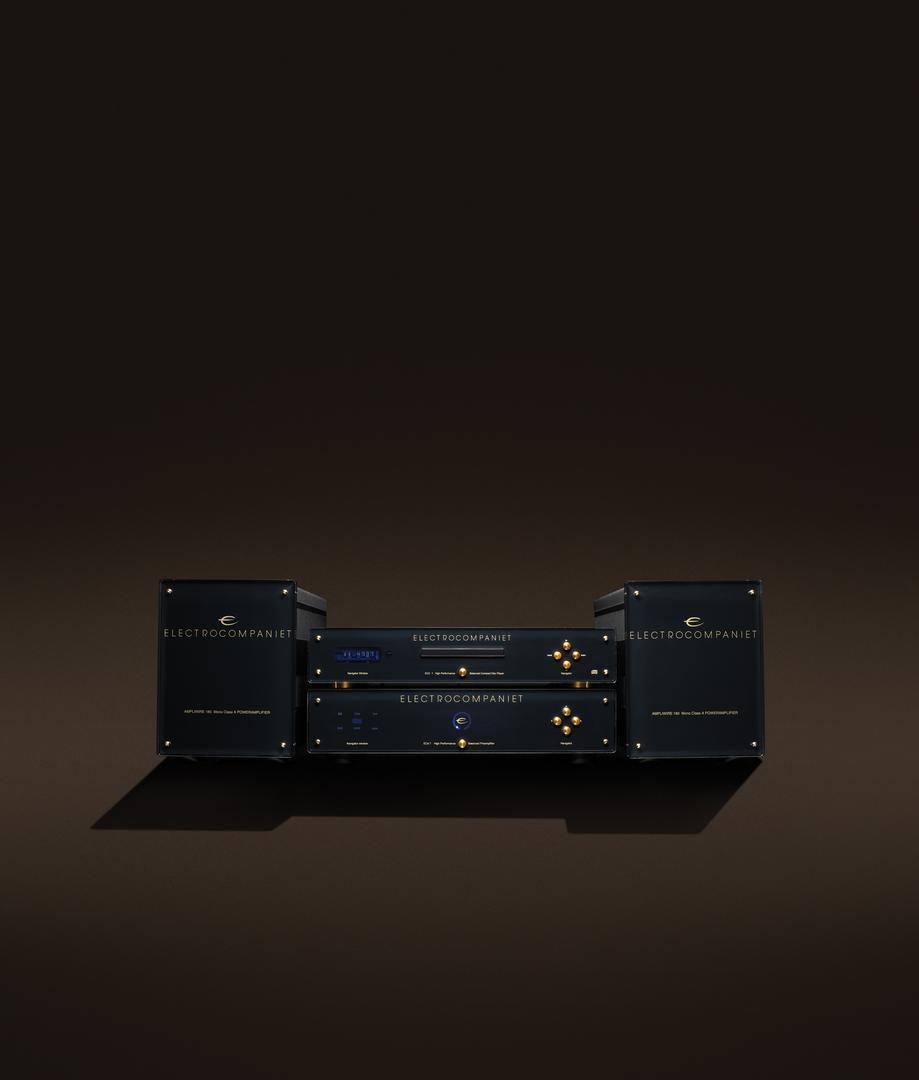 I am, however, going to make two serious complaints about the EC 4.7. First, I find I consistently need two balanced or XLR inputs to feed today’s digital and analog front ends. The EC 4.7 only has one. Second, the EC 4.7 also does not have a balance control, and this I find to be a serious defect. Dave Wilson pointed out in his reviewing days—before he got a real life making speakers—that a balance control should be called an “imaging control” because it has to be set just right for any given recording to lock in the soundstage, get the best depth and width, and make the imaging as realistic as possible.
I am, however, going to make two serious complaints about the EC 4.7. First, I find I consistently need two balanced or XLR inputs to feed today’s digital and analog front ends. The EC 4.7 only has one. Second, the EC 4.7 also does not have a balance control, and this I find to be a serious defect. Dave Wilson pointed out in his reviewing days—before he got a real life making speakers—that a balance control should be called an “imaging control” because it has to be set just right for any given recording to lock in the soundstage, get the best depth and width, and make the imaging as realistic as possible.
I don’t buy audio equipment for simplicity, theory, or “purity” at the expense of musical realism, which is the general rationale for minimizing key control features. I fully recognize that some highly respected designers and manufacturers do feel such minimalism provides benefits worth their cost, and that other audiophiles do find such preamps fully satisfactory. I regularly, however, do adjust the balance control on my preamps to get the soundstage right, just as I adjust the volume to get the most musically natural sound, and I find a balance control to be essential. I would not buy a preamp or integrated amplifier without a balance control. Moreover, I have found that many top designers do get truly outstanding sound out of a preamp with such controls. To me, the absence of a balance control will always be a sign of design oversight, not design purity.
AW180 Monoblock Power Amplifier
If that is a bit of a downer, let me give you an upper. The AW180 monoblock power amplifiers are the “jewels” of this Electrocompaniet trio. They sell for $4795 each, but they feature Class A input and driver stages coupled to a Class AB output stage that delivers 180 watts into 8 ohms, 350 watts into 4 ohms, and 625 watts into 2 ohms. This is the kind of power into low-impedance loads that many high-end speakers really need in spite of their nominal impedance ratings, and it shows up clearly in comparative listening.
I tried the AW 180s with a range of speakers—Magnepans, Quad 2905s, and a truly demanding set of early Apogee ribbon speakers—as well as with a range of speaker cables. They proved to be some of the least interface-sensitive amps I’ve worked with in awhile, as well as some of the most consistent in delivering the same sound quality into a wide range of loads.
Unlike the CD player and preamp—where Electrocompaniet furnished some of the least informative technical literature I have encountered, as well as some of the smallest owner’s manuals—the manufacturer makes technical claims about the amps that may help explain why their sound is so good:
“Traditionally, designers increased feedback to make a larger portion of the output signal control the amplifier’s response. Our listening tests showed us that simply applying more feedback was not the answer. In fact, as one kind of distortion went down, other parameters would be adversely affected, leading to an overall degradation of sound quality. We knew that the other conventional design approach of eliminating feedback completely was not the answer either, because this would cause high distortion levels, and as a result would produce a “woolly” sound.
The answer to the dilemma was found in a novel approach to feedback theory. We developed a feedback concept that allowed local feedback to be applied around individual stages of the amplifier circuit. This approach allowed us to avoid the sonic disadvantages of overall feedback from output to input. The concept was further developed to reduce phase and interphase distortion between stages of the amplifier as well. We were able to concentrate the loop feedback on the stages of the amplifier where it resulted in audible improvement.
Stability margins were also expanded because feedback no longer affected the frequency response. The use of this concept of individual gain blocks—complex in design but simple in function—allowed us to reduce distortion to minute values in all the products. The amplifier is divided into two separate sections or gain blocks. The input block is a transconductance amplifier without overall feedback. This avoids large output current being fed back to the input, and mixed with the minute input signal. The output block is a transresistance amplifier with parallel feedback. This is done to prevent higher frequencies than the feedback loop can handle from entering the loop. An approach like this will prevent Transient Intermodulation Distortion (TIM) and Slewing Induced Distortion (SID), eliminating the need for an extremely wide bandwidth.
 All stages work in Class A with an efficiency of less than 0.1%. The power supply of the AW180 consists of one 650VA toroidal transformer. Furthermore, the power supply consists of a 60,000 microfarad reservoir divided into six 10,000 microfarad capacitors in parallel with 4.7 and 0.1 microfarad polycarbonate and polypropylene capacitors…Electrocompaniet AW180 features a balanced link to additional amplifier(s) for bi-amping. It can easily be used in bridged mode, delivering up to four times the power.”
All stages work in Class A with an efficiency of less than 0.1%. The power supply of the AW180 consists of one 650VA toroidal transformer. Furthermore, the power supply consists of a 60,000 microfarad reservoir divided into six 10,000 microfarad capacitors in parallel with 4.7 and 0.1 microfarad polycarbonate and polypropylene capacitors…Electrocompaniet AW180 features a balanced link to additional amplifier(s) for bi-amping. It can easily be used in bridged mode, delivering up to four times the power.”
I have yet to find an amplifier circuit topology that is more important than the overall quality and judgment used in executing that circuit. Electrocompaniet is, however, one of the pioneers in solid-state amplifier design, and the sound of the AW180 is outstanding enough that its technical literature is clearly worth considering.
We reviewers tend to talk about solid-state designs that have a tube-like sound character. Given the vast variety of tube amplifier sonic nuances, and the fact that many have something less than stellar sound quality, this analogy can be less than helpful. What we normally mean, however, is that the solid-state amplifier’s lower midrange and upper bass are not lean, that there is no artificial spotlighting of the upper midrange, and dynamic contrasts are musically natural. In short, what we are really saying is that a given solid-state amplifier does not have the more common failings of the more mediocre solid-state designs.
By that standard, the AW180 is “tube-like.” It provides a very natural timbre and exceptionally realistic upper bass and lower midrange. Both low- and high-level dynamic contrasts are excellent, and it does an equally excellent job of handling the upper registers of the violin, clarinet, flute, and female voice without exaggeration or any trace of hardness that is not clearly on the recording. There are many solid-state designs that also do this well, but few that do it as well.
The AW180 does an excellent job of reproducing all acoustic instruments, including demanding brush and percussion sounds and deep bass details. The sound of brass is unusually natural in every respect, and if you are into horn concertos, you will truly appreciate just how accurate the AW180 is with French horn. At the same time, the AW180 really gets the sound of solo cello, lower woodwinds, and piano right. This is not simply a matter of providing exceptionally realistic timbre. It is also a matter of exceptional dynamic contrasts, detail, and musical subtlety. Moreover, the AW180 does not become any less outstanding as music gets larger and more complex. It does equally well with large jazz bands, opera, or dense orchestral passages involving demanding instruments like the flute.
It also provides the warmth and romance of music along with musical detail. With a good recording, you will really hear the differences between instruments in the upper bass and lower midrange—areas where subtleties get slightly blurred far too often. It is a musician’s amplifier: Acoustic instruments come through as clearly and realistically as the recording, the rest of the system, and the room permit.
The AW180’s power shows clearly in the deep bass. Trot out your Telarcs, Reference Recordings, and other bass spectaculars. Try out the depths of the bass synthesizer and bass guitar. The AW180 won’t drive a truly low-sensitivity speaker in a large room to the point where your ears bleed, but it can meet all of the demands of the acoustically sane. It also does very well, indeed, with sharp bass-drum strokes and with complex deep organ passages. Bass power and bass detail are both much better than in most amps of this rated power.
As for the soundstage, the AW180 has the same strengths as the CD player and preamp. Imaging is as stable and realistic as the recording and system permit. The same is true of soundstage depth; it does not alter soundstage dimensions or instrumental timbre to create the “front row” effect of some solid-state amps. It won’t add depth where it is lacking, but it also won’t try to usher you forward when the recording has a more midhall sound.
I should also praise the sheer consistency of the AW180’s musicality. Virtually all good high-end equipment brings out nuances that differ at least slightly from the nuances of other equipment. A couple of comparative listening sessions using any familiar recording, and you will always hear something different. Far too often, however, these differences have no real aesthetic relevance. One sound is not more musically natural than the other; the sound is just slightly different—as it is in every hall or seating position in the same hall. What counts is being able to hear a lot of natural musical nuances in a very wide range of recordings and with a minimum of listening fatigue. It is consistently hearing all you should hear rather than simply hearing something different. This is an amplifier for the hours, and not just for the moment.
I do, however, have some minor gripes about ergonomics. The AW180 has the advantage of being relatively compact and light enough that moving it does not turn into a weight-lifting contest. However, it has no remote AC-power-control features, and the power switch is in back. There is no power light on the front panel; the light is on the top. This can be annoying in a number of installations. It also follows a growing European tradition of having second-rate speaker connectors that are too close together and hard to tighten. About all I can say in the AW180’s defense is that its terminals are better than those on the Quad 2805 and 2905 electrostatics—but then everything is. Scarcely the end of the world, just a minor gripe about an otherwise great design.
Summing Up
I may have reservations about the features and ergonomics of the EC4.7 and AW180, and comparative price is always an issue with European imports; however, all three Electrocompaniet components have a musical realism that is often lacking in today’s high-end electronics The midrange has lifelike warmth rather than exaggerated upper-midrange energy. The bass is tight and deep without exaggeration, and the treble is clean without any etching of detail or transient attack. Imaging is as realistic as recordings permit, and the soundstage has natural depth rather than added width.
If what you want is musical realism, rather than drama or hi-fi effects, Electrocompaniet delivers some of the best solid-state sound available.
Description
EC 4.7 Preamplifier
Frequency response: 0.1Hz–150kHz
Output impedance: 100 Ohms
Output level: Single ended 15V p-p / Balanced 30 V p-p
THD: (1 V in, 1 V out, 1kHz) < 0.002 %
Dimensions: 19″ x 4.5″ x 16.1″
Weight: 17.6 lbs.
Price: $3495
